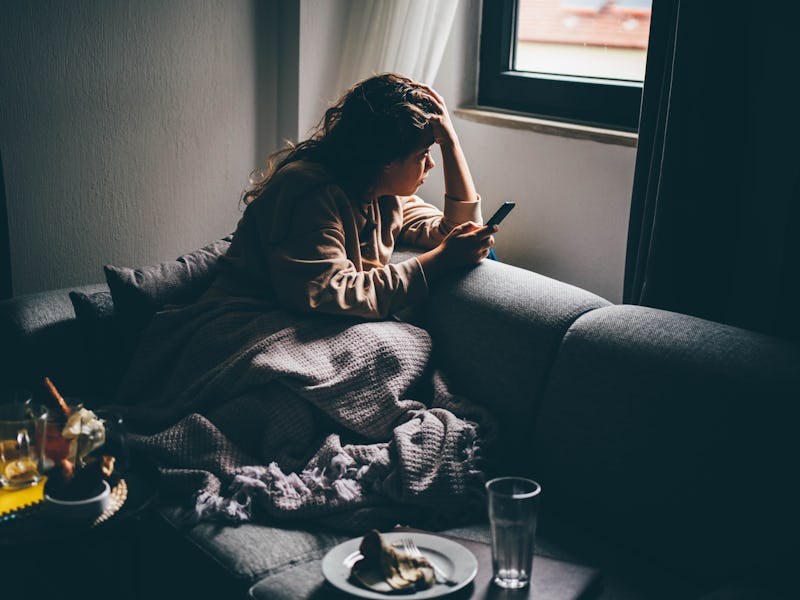Need to use 988? 4 key questions about the new mental health crisis hotline, answered
Here’s what we know about the new number.

People experiencing a mental health crisis in the United States can now call 988 from any state. The goal is for people to have an easy number to remember in an emergency, similar to 911. Staffed by people from the National Suicide Prevention Lifeline, the direct line is meant to address the ever-increasing mental health challenges Americans face. But questions remain about some aspects of the service. Here’s what we know about the new number.
Who should call 988?
Although it used to be called the National Suicide Prevention Lifeline, it’s not only for people who are experiencing suicidal thoughts. (Calls made to the old number, 800-273-TALK, will still work.)
“Whether you’re experiencing thoughts of suicide, a mental health or substance use crisis, or any other kind of emotional distress, there is compassionate, accessible care and support,” Miriam E. Delphin-Rittmon, HHS Assistant Secretary for Mental Health and Substance Use and leader of SAMHSA, said in a statement. “With rising levels of anxiety, depression, and other mental illnesses – and the devastating number of overdose deaths – it is crucial that people have somewhere to turn when they’re in crisis.”
Is there a text or chat 988 option?
Yes, you can chat with a 988 counselor at https://988lifeline.org/chat/. However, you currently have to fill out a “pre-chat” form, which may be offputting to some people. The site also notes that there may be a wait, so to speak with a counselor now, you should call the lifeline.
Texting functions much like chatting. You simply text 988, but you must fill out that “pre-chat” form before connecting with a counselor. Any conversations should still be confidential, but the form may give people in distress pause. The one exception to the service's confidentiality is when the counselor believes you’re an immediate danger to yourself; more on that below.
What happens when you call 988?
When you call 988, you’ll hear an automated recording asking you to press one if you’re a veteran and two if you speak Spanish. Then, your call is routed to the closest crisis center based on your area code. Once that happens, you’ll be connected to a counselor.
Will 988 counselors send emergency services to my house?
According to SAMHSA, it’s unlikely but possible. According to the SAMHSA website, “The vast majority of those seeking help from the Lifeline does not require any additional interventions at that moment.”
However, they add that emergency services like law enforcement or EMS are called in for less than two percent of Lifeline calls; SAMHSA claims that this connection is typically reserved for when “a suicide attempt is in progress.”
How is 988 funded?
As part of the Biden administration’s mental health initiative, he has already allocated 432 million dollars for mental health services, including “staffing crisis call centers, back-up center capacity, and to provide special services, including a sub-network for Spanish language speakers,” according to the Health and Human Services website.
The Administration also expects states to contribute; they can apply Medicaid dollars, State Opioid Response grants, or come up with other revenue streams to fund the service.
That’s already happening, to some extent: Currently, 23 states have authorized additional legislation and, in some cases, funding, something Delphin-Rittmon, said is integral to the Biden Administration’s plan to make the service robust enough to meet the high demand.
“Over time, the vision for 988 is to have additional crisis services available in communities across the country, much the way emergency medical services work,” she said in a statement. “The success of 988 depends on our continued partnership with states, as the federal government cannot do this alone. We urge states and territories to join us and invest further in answering the call to transform our crisis care response nationwide.”
It certainly seems like they’ll need to. Last week, Health and Human Services released data showing that, in August 2022, calls were up 45 percent compared to calls to the old number in August 2021. The infusion of cash to the service, be it from the Biden administration, grants, or additional state funding, does seem to be allowing counselors to meet most of the need, for now: HHS’ data show that while 88 percent of calls were answered in August, counselors responded to 98 percent of incoming texts and 97 percent of chats.
This article was originally published on